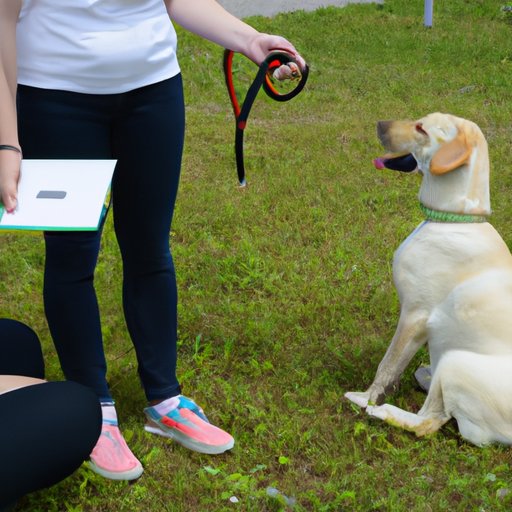Introduction
Service dogs provide invaluable assistance to people with physical, emotional, or psychological disabilities. These dogs are specially trained to perform specific tasks that their owners can’t do on their own. While it may seem like a difficult process, training your dog to be a service dog is possible with dedication and consistency. Before you begin, it’s important to understand what a service dog is and the benefits they provide.
Definition of Service Dog
A service dog is defined by the Americans with Disabilities Act (ADA) as “any dog that is individually trained to do work or perform tasks for the benefit of an individual with a disability, including a physical, sensory, psychiatric, intellectual, or other mental disability.” These tasks must be directly related to the person’s disability. Examples of tasks include guiding an individual who is blind, alerting them to a sound, picking up dropped items, or providing stability when walking.
Benefits of Having a Service Dog
Having a service dog offers numerous benefits for individuals with disabilities. According to a study conducted by the U.S. Department of Veterans Affairs, service dogs can reduce symptoms of post-traumatic stress disorder (PTSD) in veterans, improve self-esteem, and help individuals feel more secure in public settings. Additionally, service dogs can help individuals become more independent, as they can assist with everyday tasks such as opening doors, retrieving items, and providing physical support.
Research the Process
Before beginning the training process, it’s important to research the regulations and standards for service dogs. The ADA has specific guidelines regarding service animals, which include allowing them to accompany their owners in public places, and requiring that they be allowed access to all areas of a building that are open to the public. Additionally, it is important to understand the areas in which your dog needs to be trained. This includes basic obedience, task-specific behaviors, and public access skills.
Develop a Training Plan
Once you have done your research, it’s time to develop a training plan. Establish achievable goals for your pup and break them down into smaller, manageable steps. Utilize positive reinforcement methods such as clicker training and treats to encourage desired behaviors. Incorporate regular practice sessions throughout the week to reinforce the behaviors you are teaching. Remember to always be patient and consistent with your dog during training.
Conclusion
Training your dog to be a service dog can be a lengthy process, but with dedication and consistency, it is achievable. To ensure success, conduct thorough research on the regulations and standards for service dogs, create achievable goals, and use positive reinforcement methods. For more information on service dogs and training tips, visit the American Kennel Club or Assistance Dogs International.
(Note: Is this article not meeting your expectations? Do you have knowledge or insights to share? Unlock new opportunities and expand your reach by joining our authors team. Click Registration to join us and share your expertise with our readers.)
